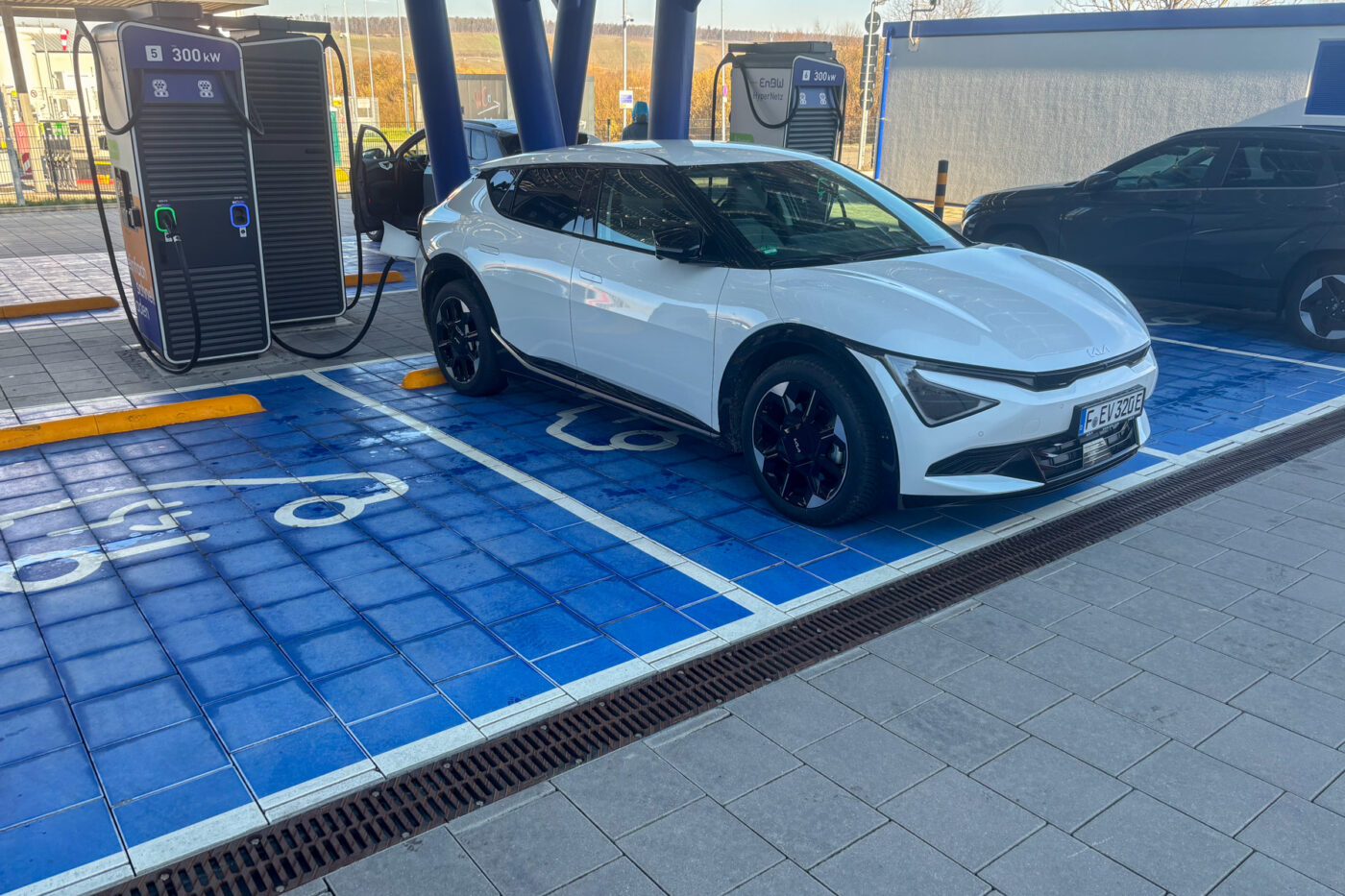
Kia EV6: An almost perfect all-rounder?
Although it now appears different from the front, the EV6 has remained true to its spirit in this respect: its design continues to polarise. The same applies to the technology, which has also been revised. Comments under our articles often and passionately discuss the sense or nonsense of the 800-volt technology. Some say it is unnecessary and expensive, while others believe it is the only sensible approach for new electric cars in 2025.
But let’s take a look at the data first: The revised EV6 is fitted with a new 84.0 kWh battery. Previously, the maximum was 77.4 kWh. As is typical with Hyundai-Kia, this is a gross value, as the manufacturer does not usually state the usable energy content. It is likely to be around 80 kWh. Kia has not only increased the energy content with revised cell chemistry but has also increased charging power from 240 to now up to 258 kW peak. This means that the charging time from 10 to 80 per cent remains at 18 minutes – still a very good value for a mass-produced electric car in Europe, regardless of the price range.
Out test car costs €59,730
For the test, Kia provided the EV6 84 kWh RWD in the Earth trim level. This variant combines the large battery with a rear-wheel-drive electric motor with an output of 168 kW. Together with the 19-inch tyres, this model achieves a standard range of up to 582 kilometres (361 miles) (20-inch tyres: 560 km according to WLTP). Below that is the base model with a 63-kWh battery and 125-kW rear-wheel drive, and above that is the 239-kW all-wheel drive with the large battery. Earth is the name of the mid-range of the three equipment lines, which is above the basic Air equipment line but below the GT Line (only with the large battery). The car we got to drive has a list price of 51,990 euros. With a few extras, the price adds up to 59,730 euros.
€980 of the price goes to the ‘Snow White Pearl’ paintwork. The white pearl effect paint gives the EV6 a special look in the sunshine, as the grooves and edges in the body panels are clearly visible. With darker paintwork, these details can be somewhat obscured. One disadvantage of the white paintwork is that the dirt is relatively easy to see, and we collected quite a lot of dirt on the wintery road, especially on the tear-off edge around the continuous LED rear light. Fortunately, both the boot lid and the cover of the charging flap can be operated electrically.
On the motorway, two of the facelift’s innovations stand out pleasantly compared to its predecessor. Firstly, the noise insulation has improved significantly, and it is much quieter in the interior at the recommended speed, even though the test car was on winter tyres. With summer tyres, the difference could be even greater. This also applies to the increased comfort, which is mainly due to the revised chassis. The tuning is now a little softer. In my opinion, this makes the EV6 well-suited for long distances on German motorways and for everyday driving. The predecessor was on the firm side, but Kia’s chassis engineers have now moved away from that. Nevertheless, the EV6 can still be driven a little more sportily – but for a sports car experience, you should probably opt for the EV6 GT, where there are no compromises in favour of motorway comfort.
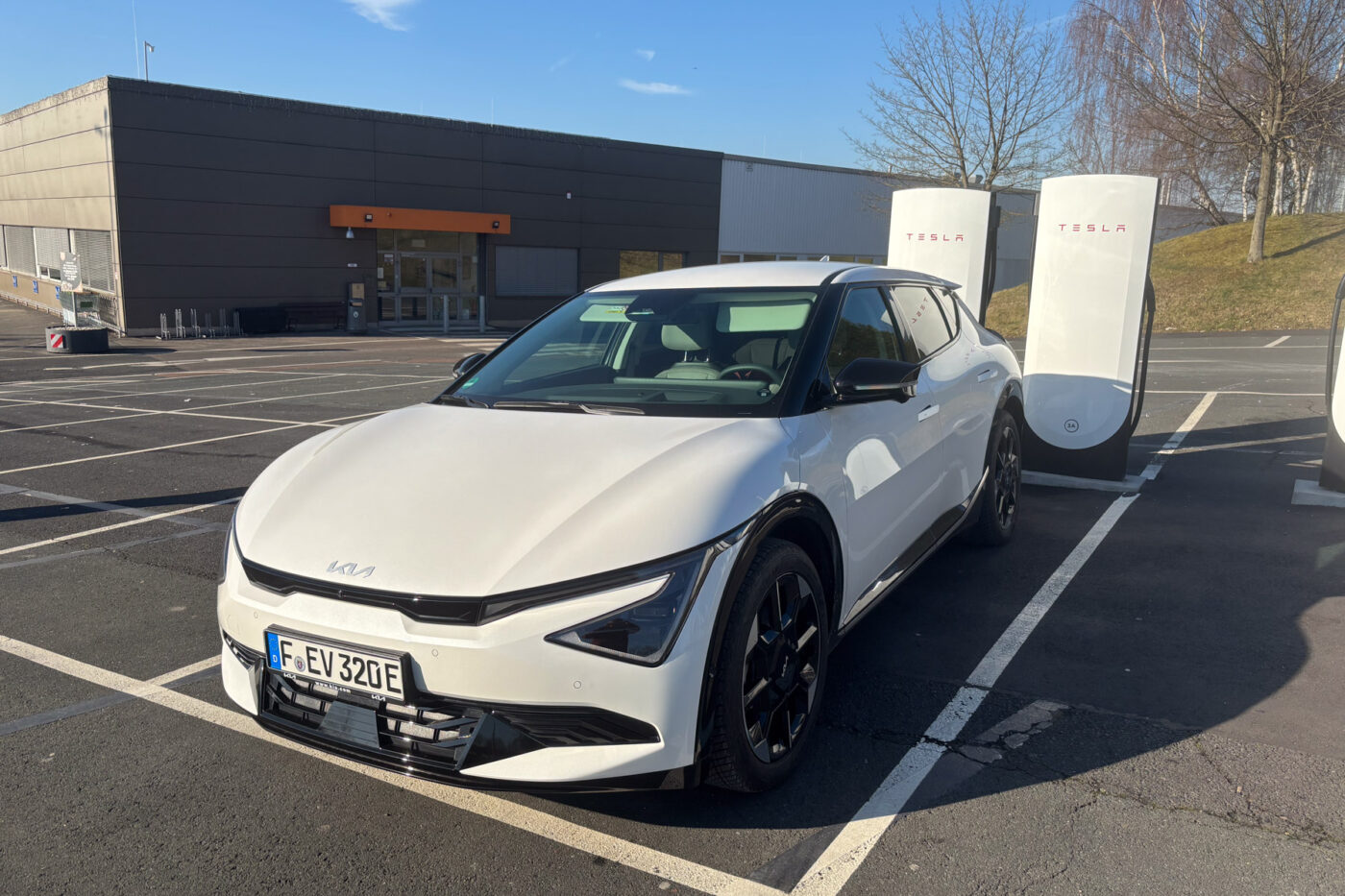
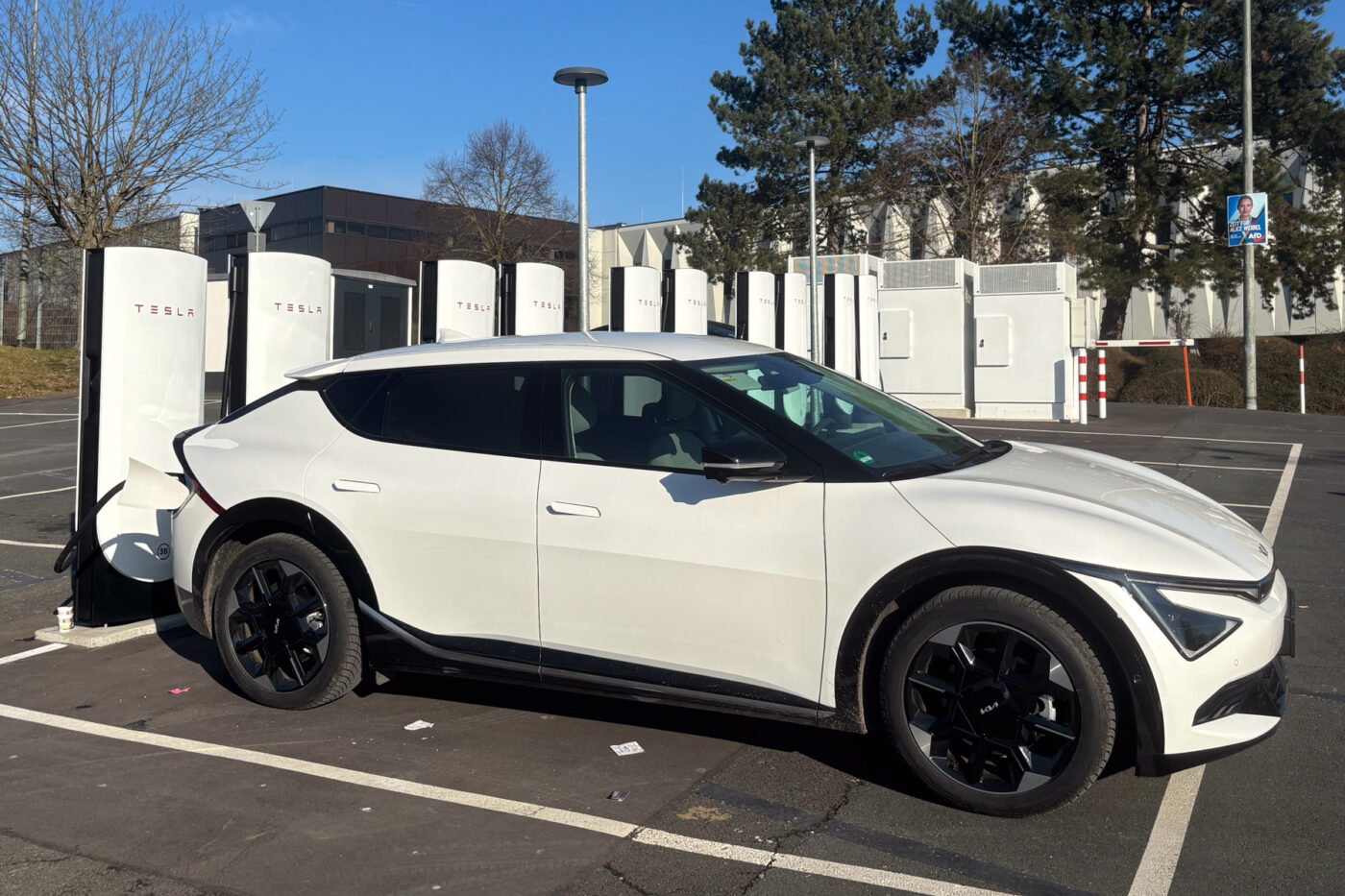
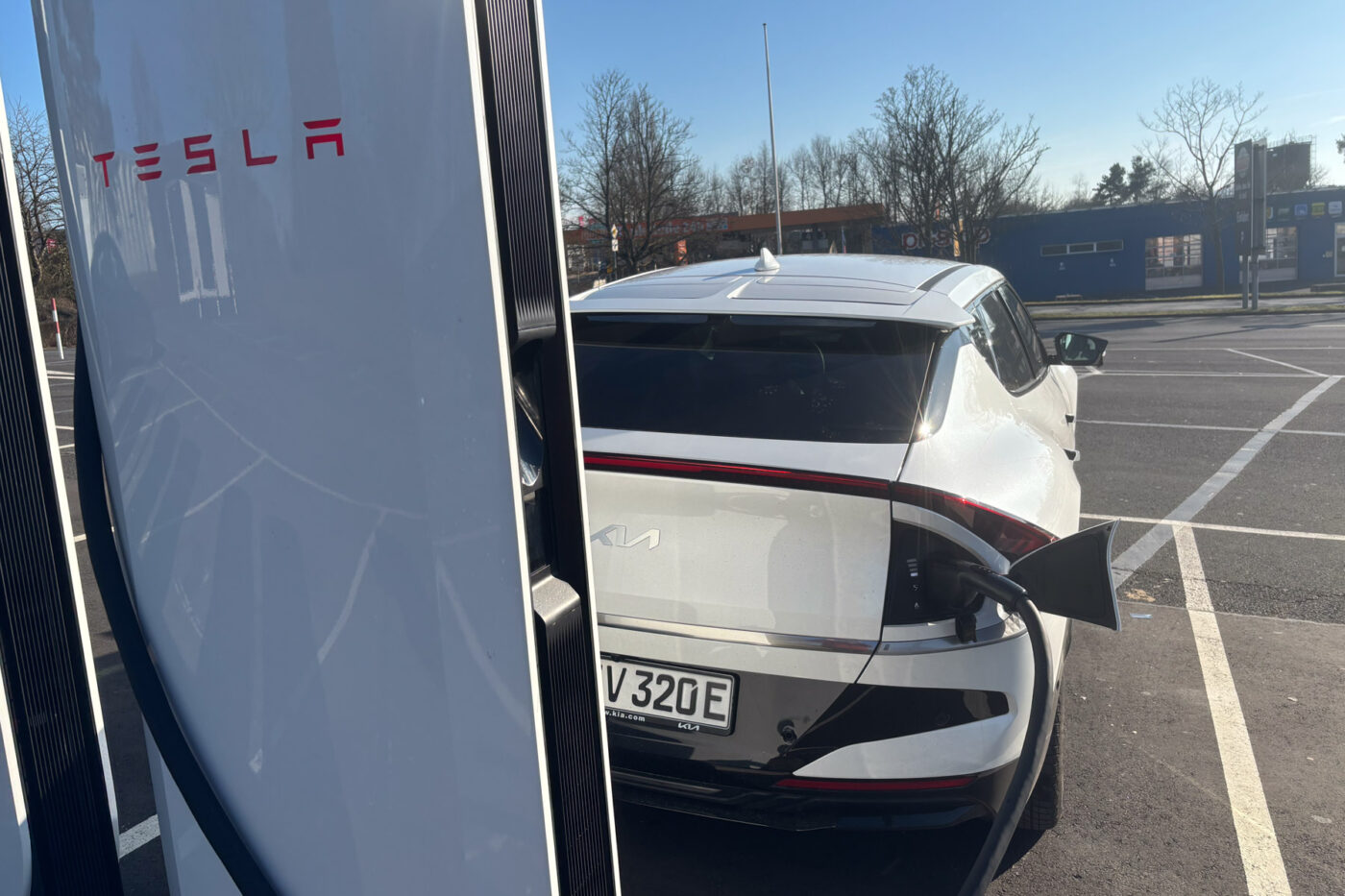
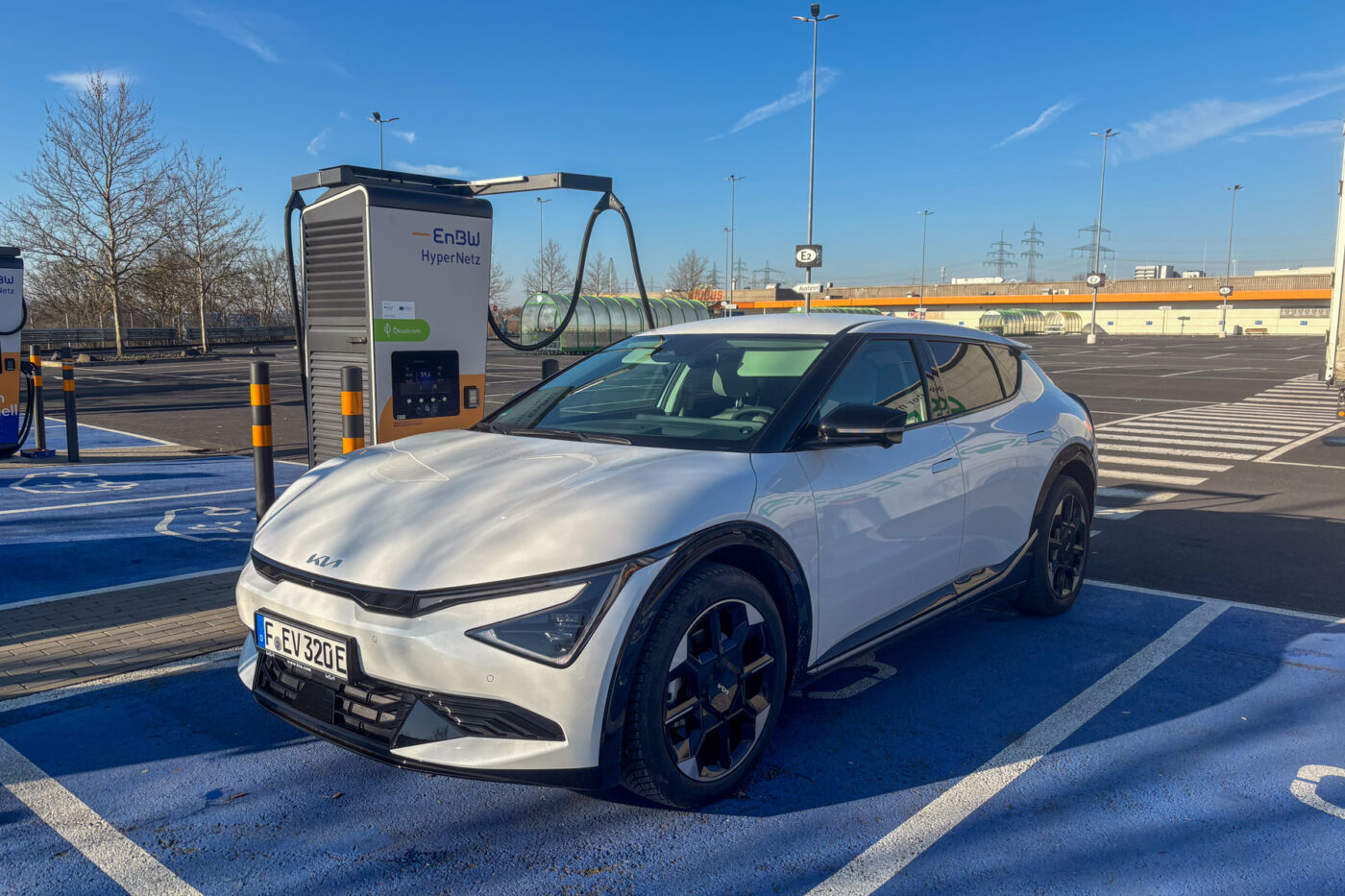
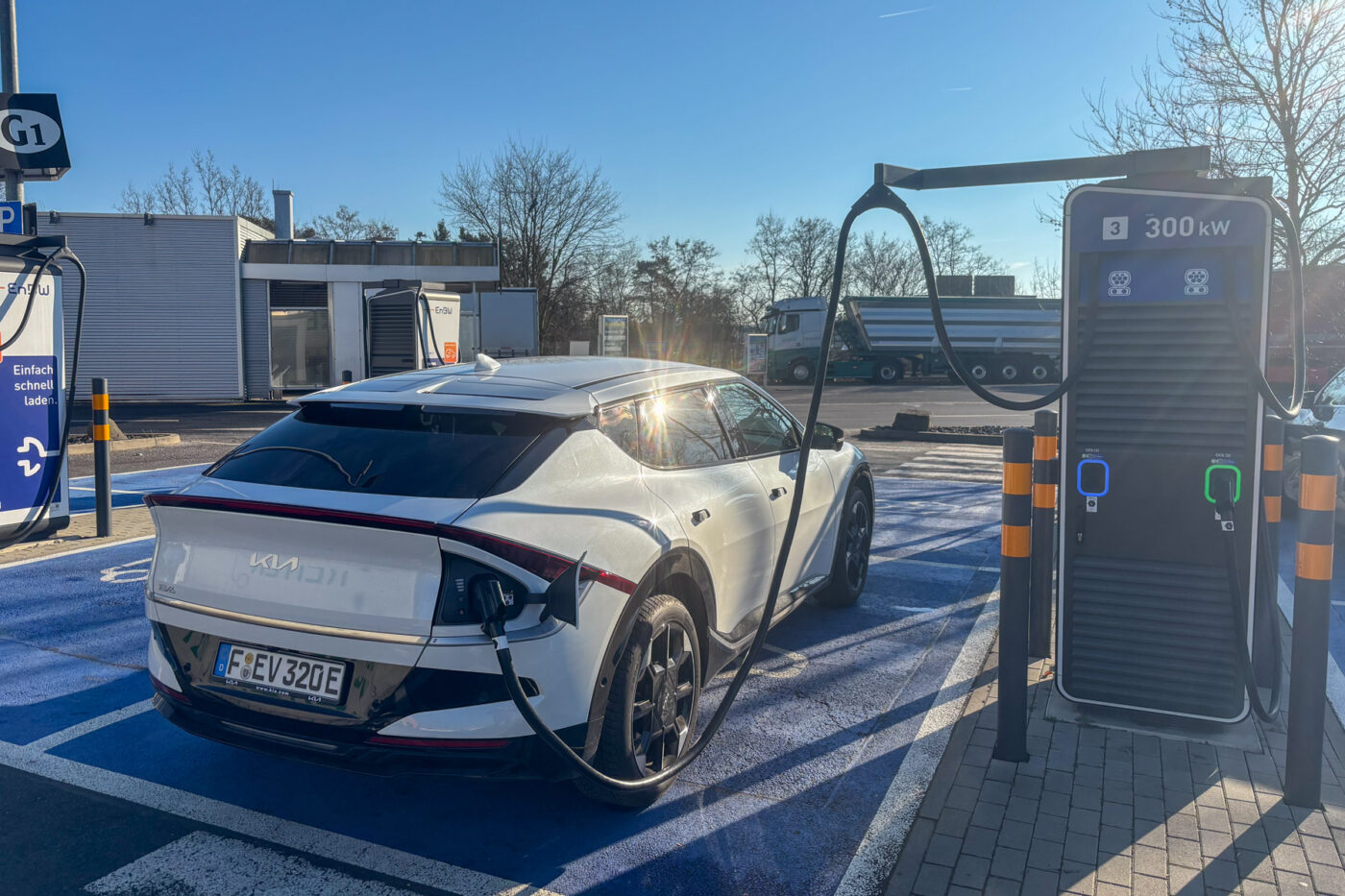
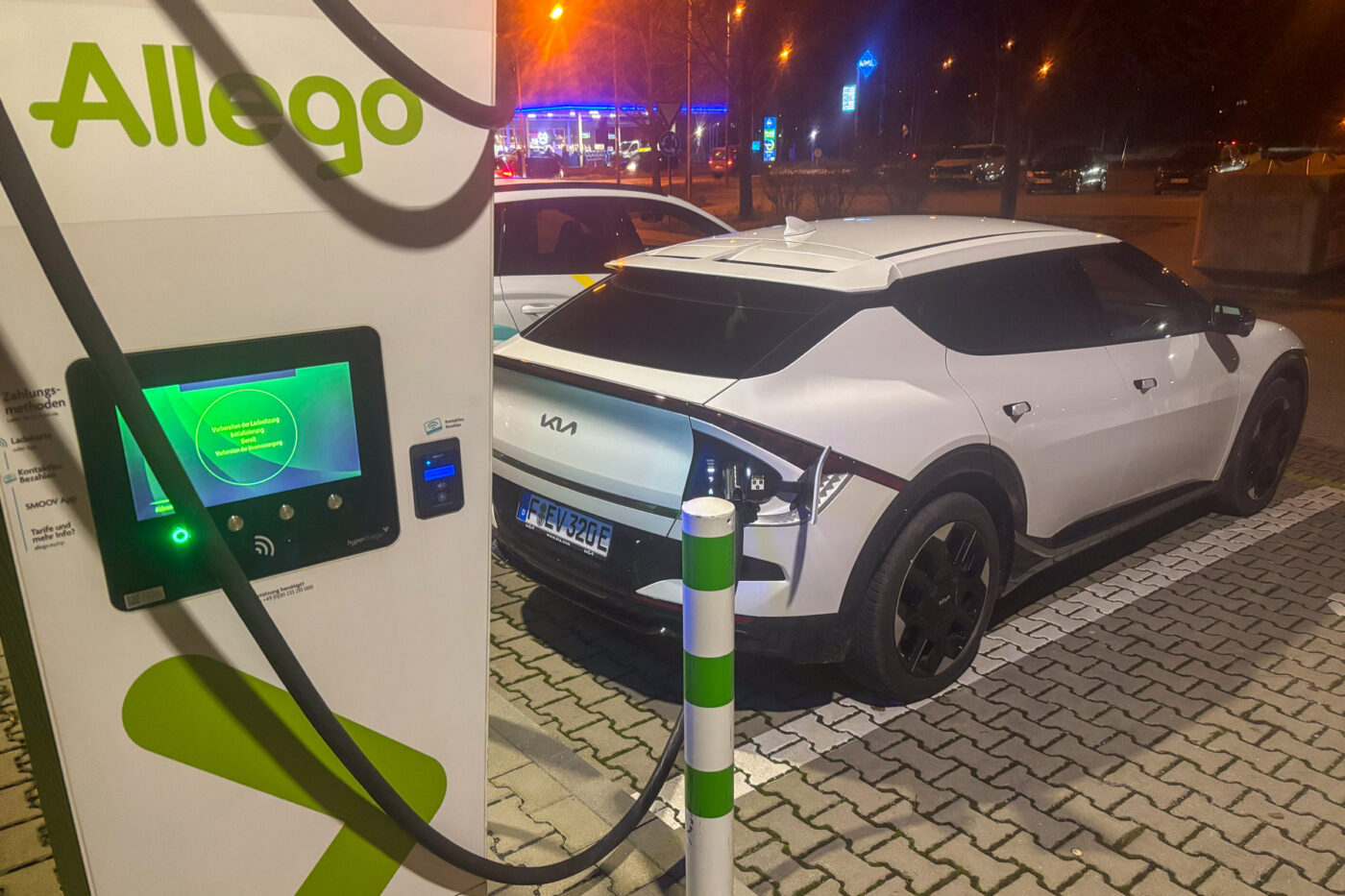
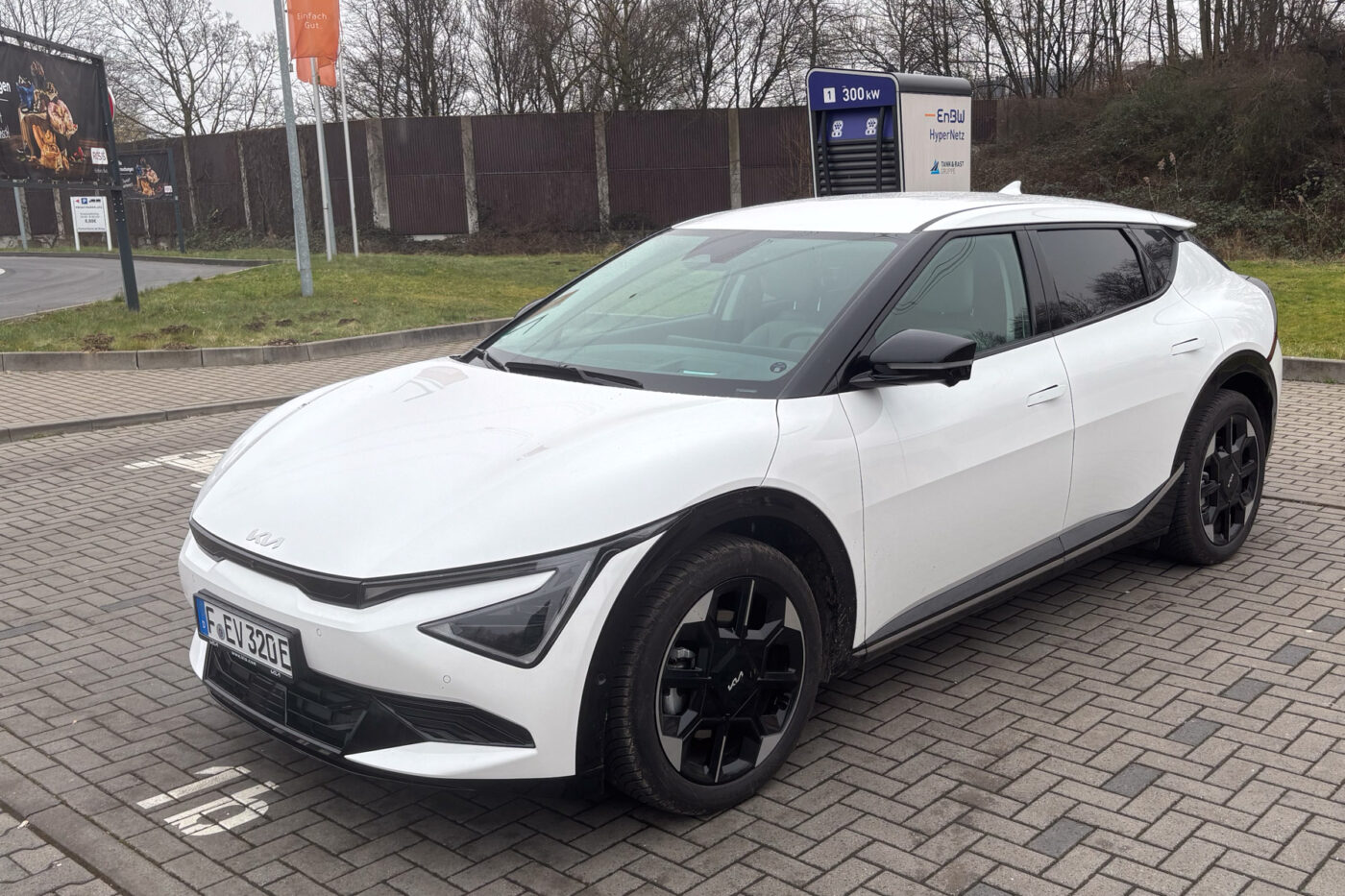
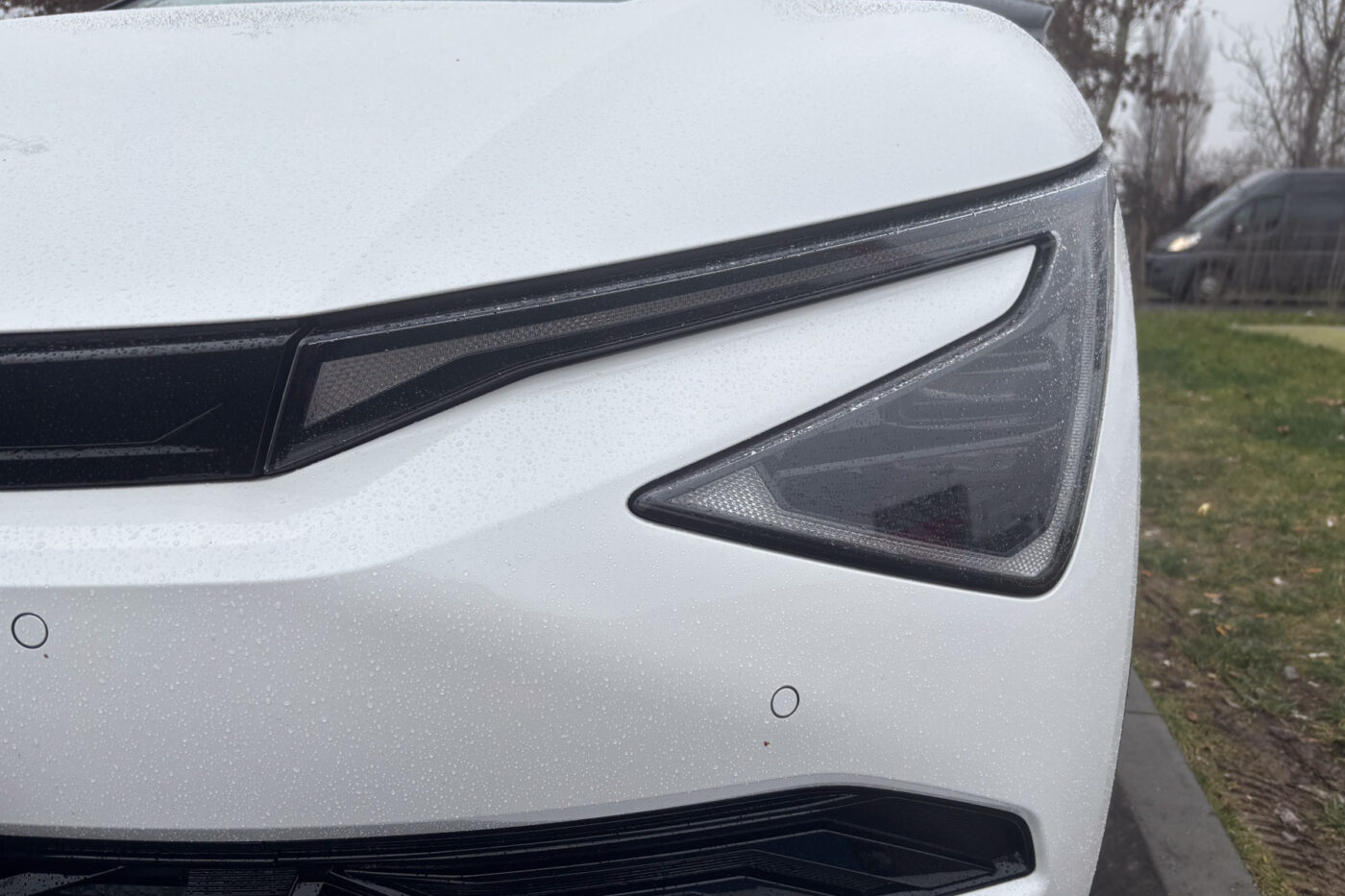
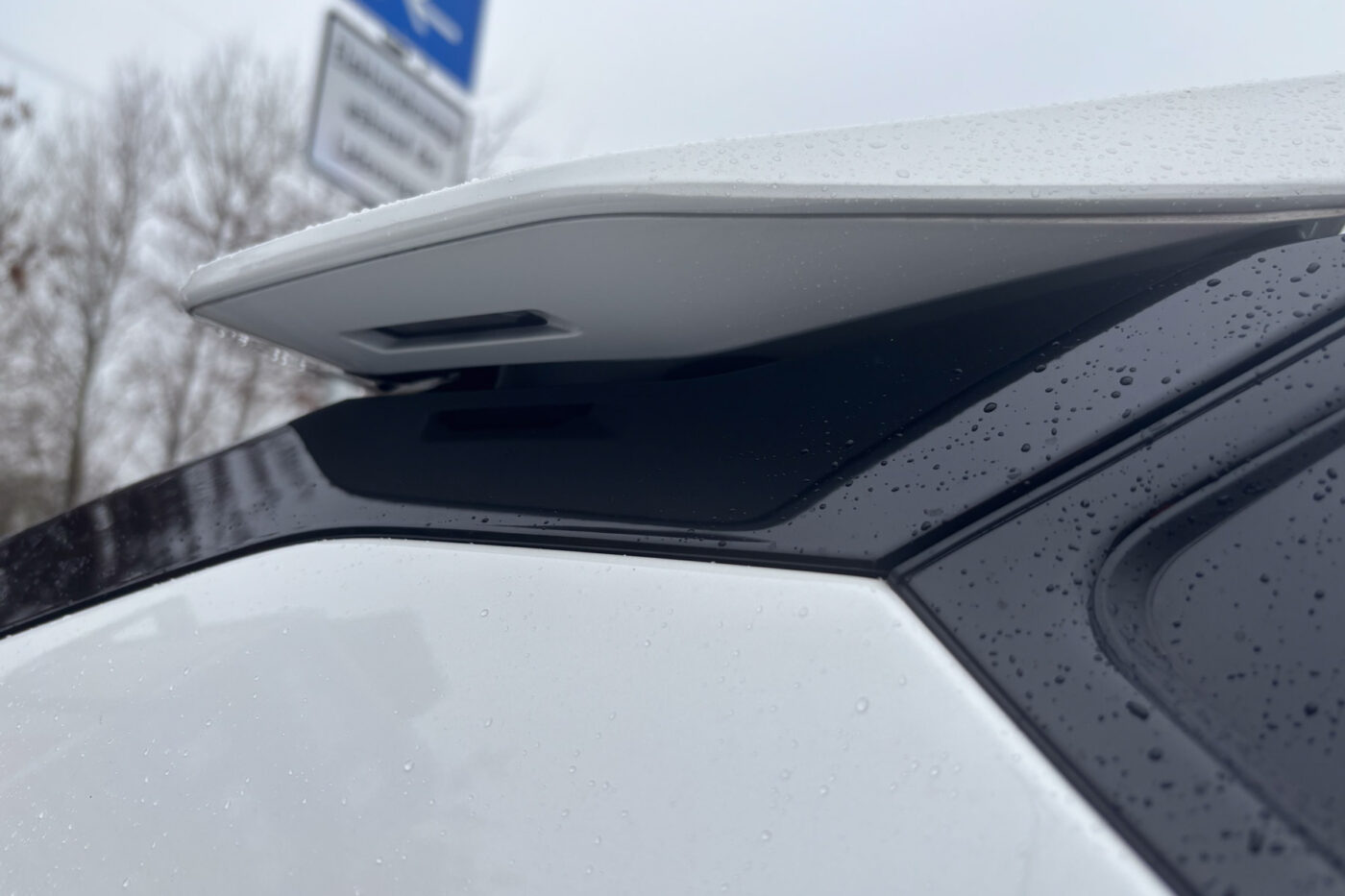
On the motorway, the standard-trim EV6 with rear-wheel drive does a good job in terms of comfort and consumption. With temperatures mostly in the single digits, the onboard computer roughly oscillated between 20 and 23 kWh/100 km, with a brisker pace on the empty motorway sometimes approaching 25 kWh/100 km. However, as temperatures rose, the consumption indicator visibly dropped, which is why a good 17-18 kWh/100 km should be possible with this driving style. And that would result in a real-world range of well over 400 kilometres; in winter at temperatures around freezing, you should rather expect 330 to 350 kilometres. For a ‘perfect all-rounder’, some might expect a little more than 330 kilometres. Nevertheless, this value is impressive, especially in combination with the short charging times. There’s no question about it: I wouldn’t complain about a real range of over 450 kilometres in winter either.
But is a range like that really necessary? For example, I set off from Düsseldorf fully charged and headed south. After 272 kilometres, the battery still had 20 per cent left, and the temperature was around three degrees above zero. During a pit stop, the EV6 had already recharged enough electricity at an Allego hypercharger for the remaining 160 kilometres, so there was no loss of time.
The charging behaviour itself is still impressive: with the facelift, Kia not only increased the peak but also improved the charging curve when it is reduced after the long plateau. Basically, the familiar behaviour remains, in that the EV6 does not start at full power, but instead initially takes a short step at almost 200 kW. At around 20 per cent charge, the slightly further rising plateau begins, which culminates at the 258 kW peak. The EV6 can maintain this power until just over 50 per cent charge, and it only takes a few minutes to go from 10 to 50 per cent. So it’s not a big problem to recharge 55 kWh in 18 minutes.
Although a lot has already been done on this topic, there is still a lot of catching up to do in terms of software. Kia can definitely achieve more with its electric car here. For the planned 430 kilometres (a 400-kilometre range was indicated with a full battery), the EV6 wanted to go to the charging station twice, according to its own planning. Once after only 186 kilometres with a supposedly 30 per cent charge at Ionity to 80 per cent, then later again at the Pfalzwerke from 20 to 49 per cent. The system suggested a charging time of 39 minutes for 430 kilometres. In fact, we only needed 17 minutes and 40 seconds to charge the battery. So, at the moment, you are still better off with manual planning. There’s no question about it: I would have reached my destination with the Kia planning, but with an unnecessary delay. That should be better for a car that will cost almost €60,000 in 2025.
At least if you prefer to plan manually or don’t use Kia’s own navigation anyway, but Apple CarPlay or Android Auto, you can now start the battery preconditioning manually. This is relatively easy to do via the EV menu. However, in my opinion, Kia has made it a bit too simple: it only shows whether the battery temperature is currently too low, too high or within the optimal range – in the first two cases, battery preconditioning can be activated, otherwise not. However, you can’t see how warm or cold the battery really is, or the information that is actually relevant, such as how long the system has to run until the battery is within the optimal range. Has the battery warmed up sufficiently over the 272 kilometres despite the low outside temperatures? Or is the battery still cold due to the gentle driving style and needs almost three-quarters of an hour to warm up? Other manufacturers, such as VW and Mercedes, now provide accurate information regarding the battery’s status.
I always find it very convenient to be able to adjust the recuperation easily using the shift paddles on the steering wheel in the test cars from Hyundai and Kia. I actually prefer a car that behaves predictably when I take my foot off the accelerator. The paddles make it easy to change this intuitively, and the EV6 also remembers the recuperation level set when, for example, the car is restarted or the cruise control is deactivated. Others always fall back to the standard level – and thus the car may react differently than expected. However, I also admit that my own electric car has no recuperation setting via shift paddles – and I’m not sure if I just like to use the feature in the Kia test car because it’s there, and I might ignore it after a while.
The main improvement in the interior resulting from the facelift is the Kia infotainment system CCNC (Connected Car Navigation Cockpit), which is based on the system still called Gen5W. The CCNC worked cleanly and reliably in the test. The update that has since been announced, which allows the desired charge level at the destination or charging station to be set directly via the map view, was not yet available for our test car – perhaps it would have made it easy to adjust the less than ideal route planning in our example. Overall, the system requires some practice to get to know all the submenus and their contents. In general, a relatively large number of clicks are needed to get to the desired feature – if you then have to search, it quickly becomes time-consuming.
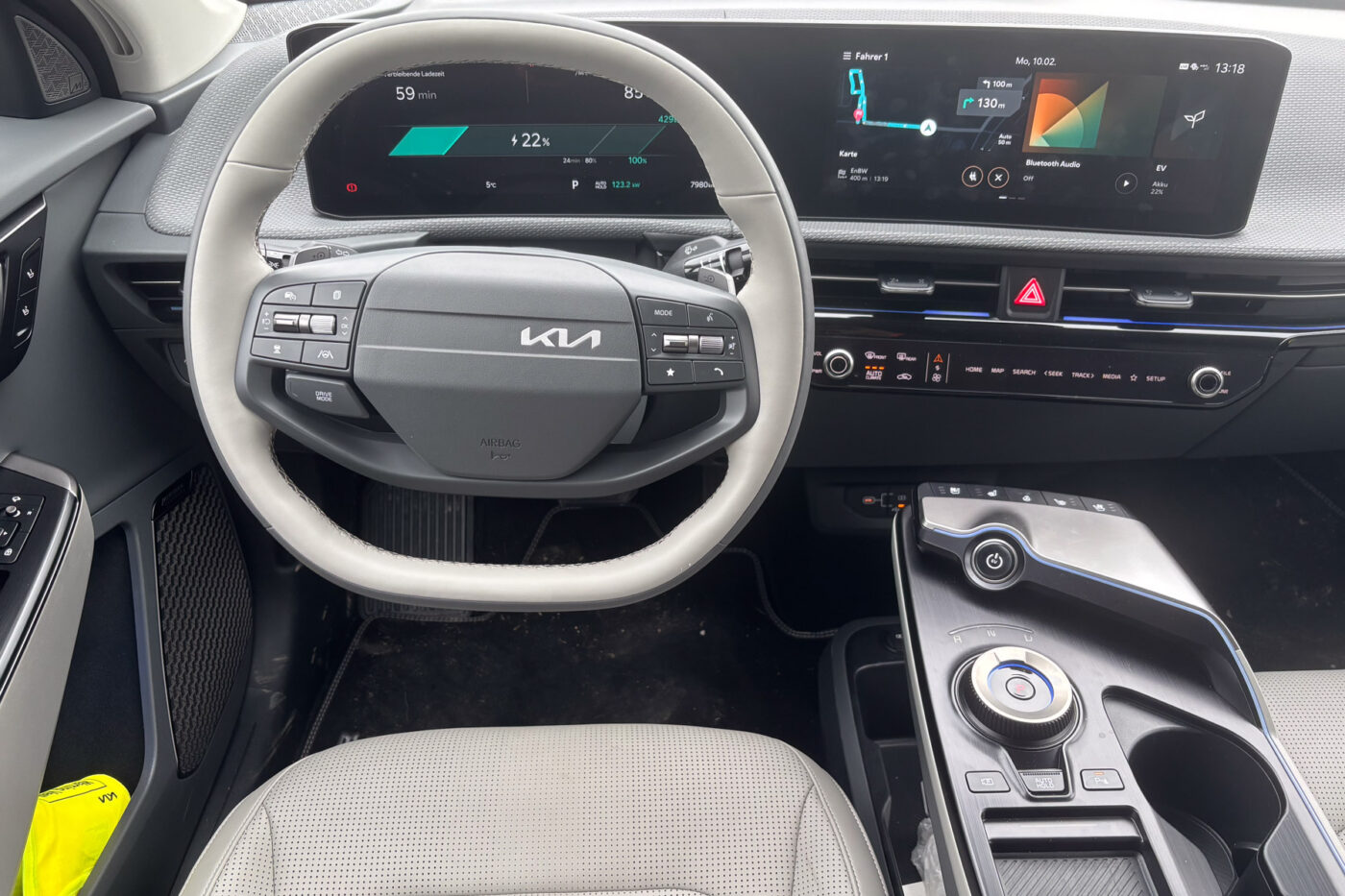
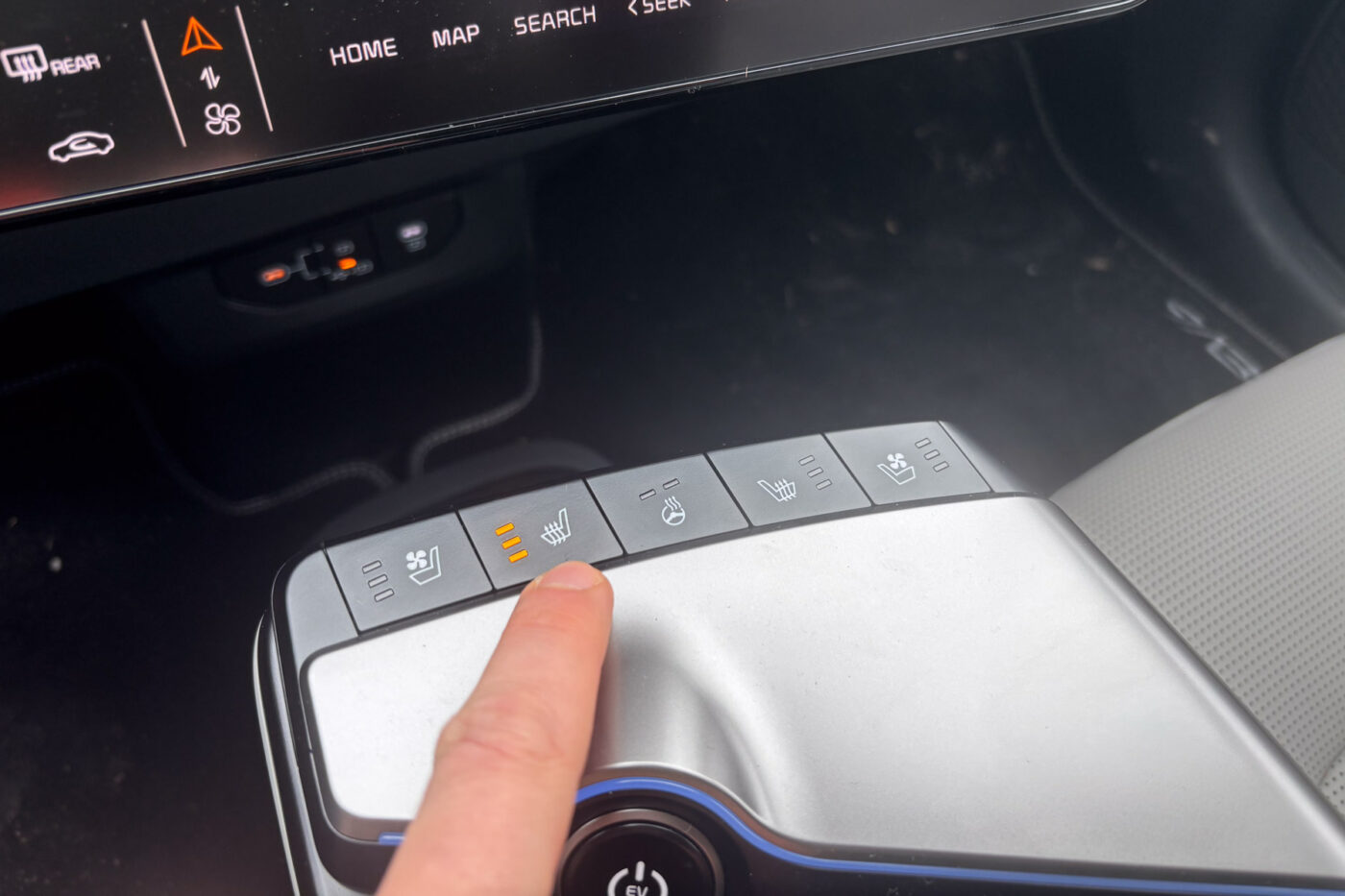
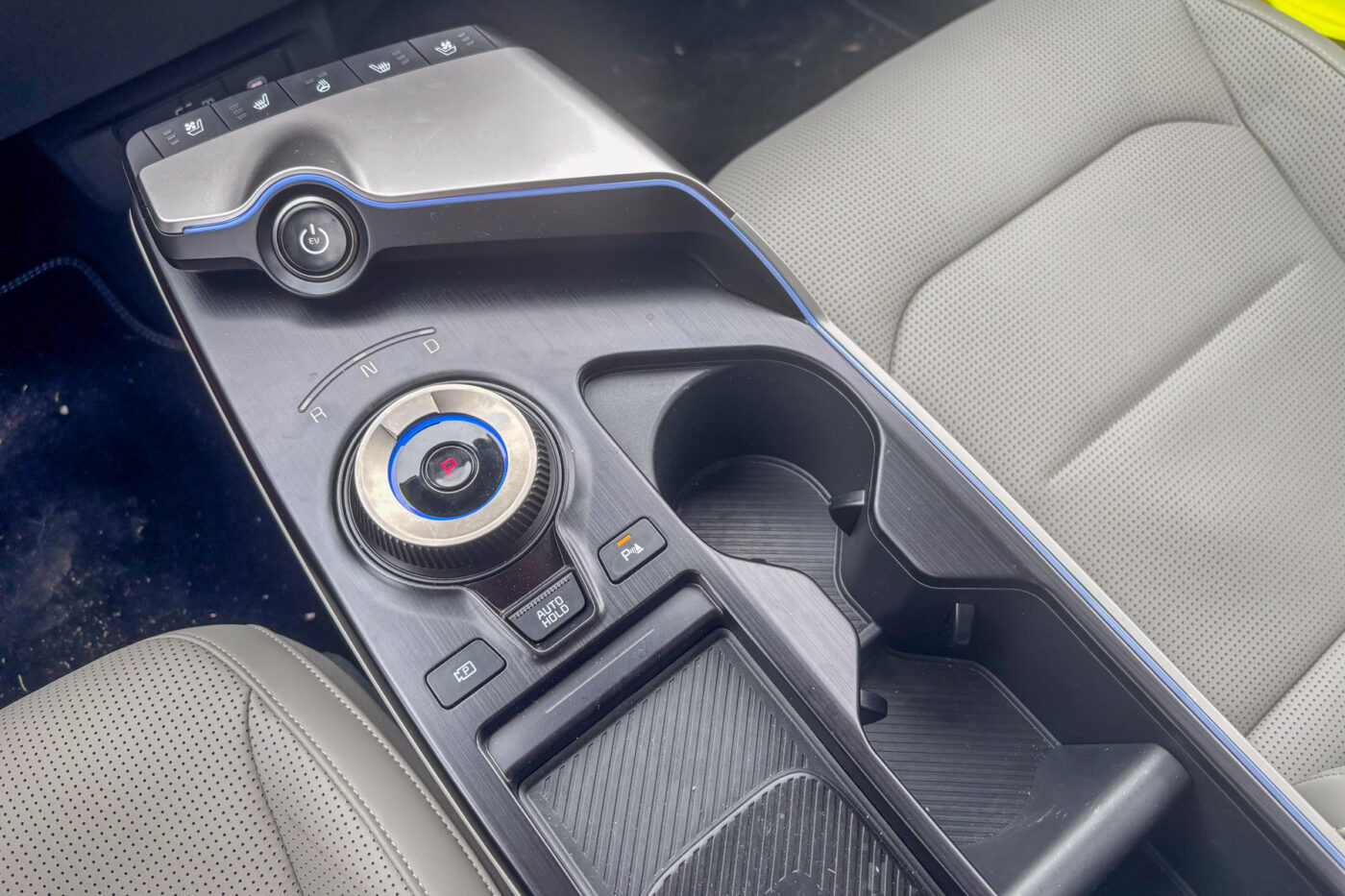
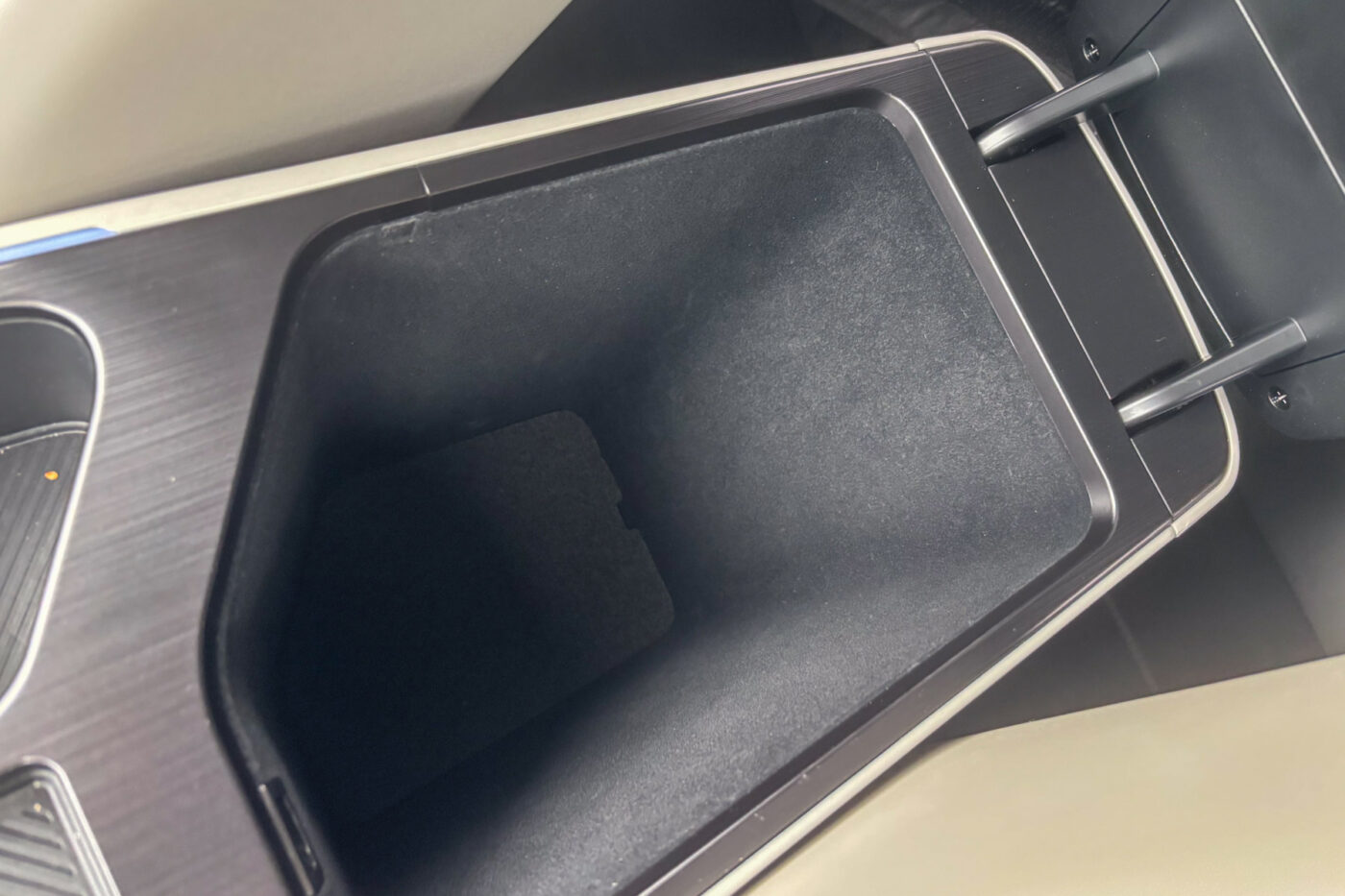

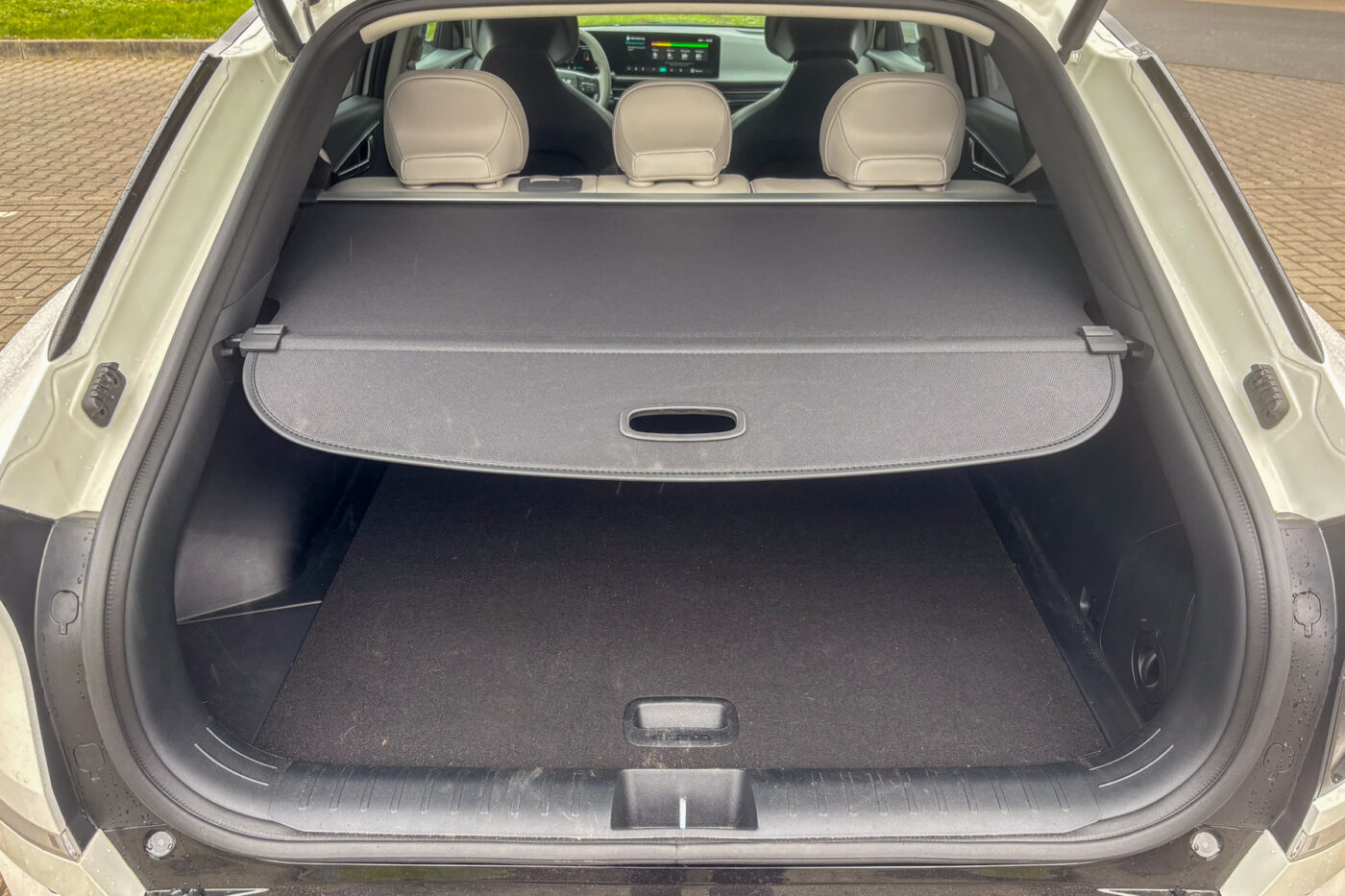
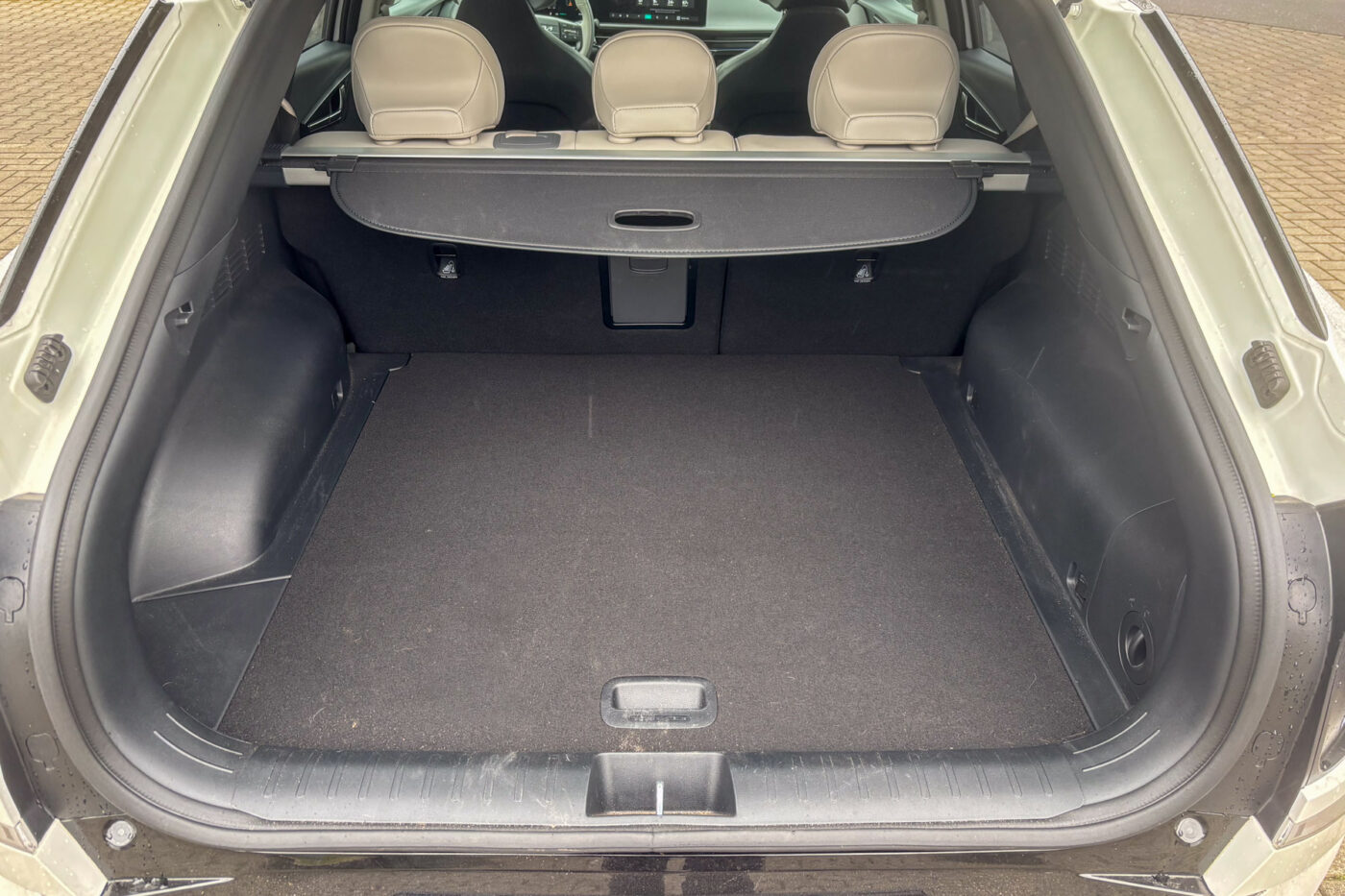
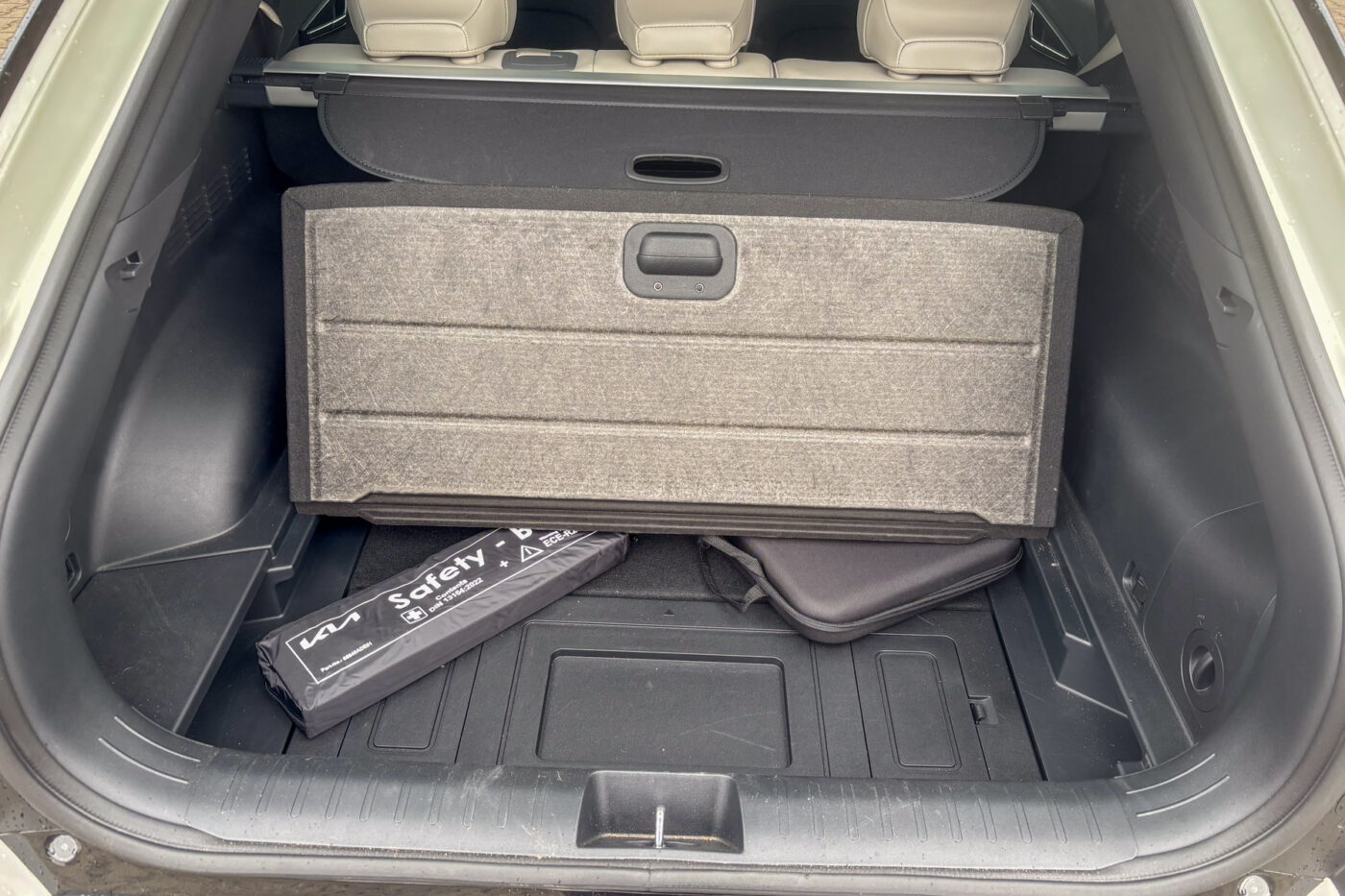
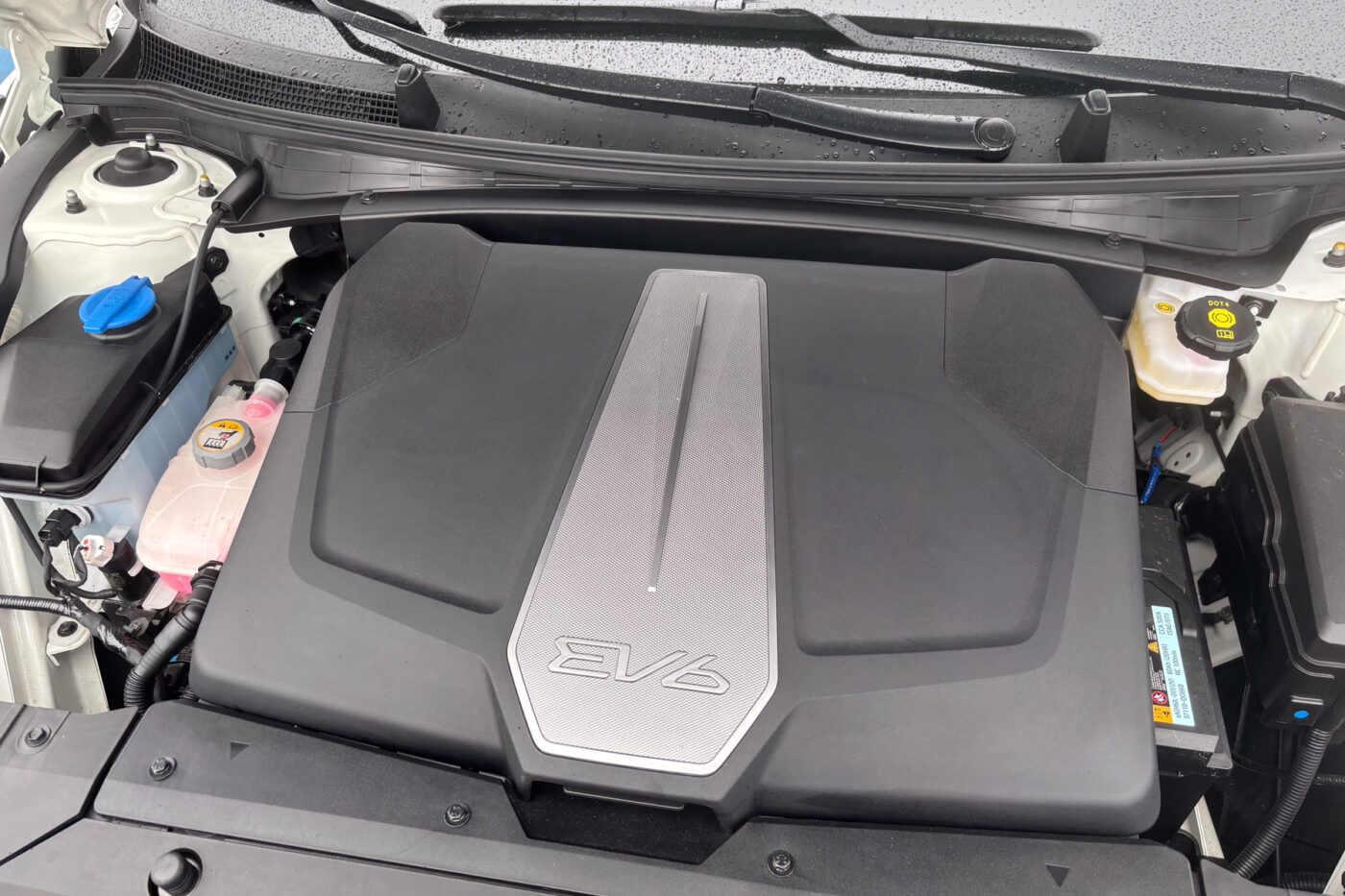
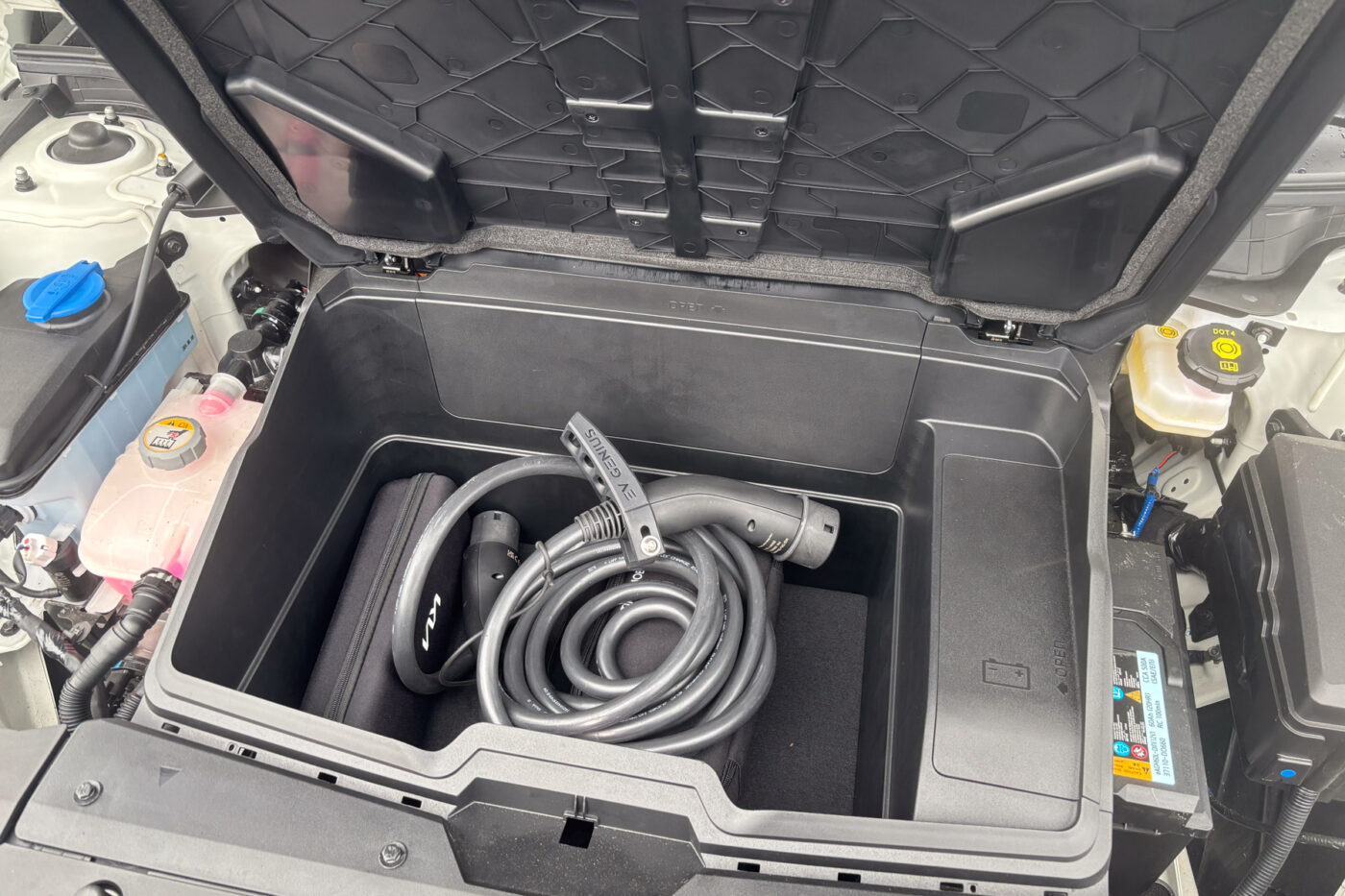
The EV6 also offers the special feature of a switchable touch bar: with a touch of a button, the bar can be switched between the quick-select buttons for infotainment and the climate bar, which also means that the function of the two dials changes – sometimes for temperature, sometimes for volume. With a little practice, this works well enough. However, if you have driven the EV3 with haptic buttons for the air conditioning directly from the EV6 for two weeks, it quickly becomes clear that this is the better solution.
One thing hasn’t changed with the facelift: the space in the EV6. There is more than enough space in the front, and in the back, there is more than enough legroom even behind a very tall driver. Especially compared to its sister model, the Hyundai Ioniq 5, which is also based on the E-GMP platform, the difference here is striking! It makes travelling very pleasant for four people, and at 490 litres, the boot is also sufficiently large. With its sloping rear window, the Kia does lose some utility when fully loaded, but this compromise is often necessary with electric cars: a steep rear window is good for space utilisation, but very bad for aerodynamics and thus for range.
What is new, however, is that the two models with the large battery now have a towing capacity of 1,800 kilogrammes; until the facelift, the maximum towing capacity was 1.6 tonnes. With the small battery, however, it remains at 750 kilogrammes.
The basic ‘Air’ variant starts at 44,990 euros with the small battery (49,990 euros with the large battery). That makes it cheaper than before, but it offers more. Standard features include steering wheel heating, height-adjustable front seats with seat heating, heated and electrically folding exterior mirrors, a reverse camera, parking sensors at the front and rear, lane departure warning, and a motorway assistant. However, there are not many other options. The inductive charging option for smartphones or the head-up display are not available on the ‘Air.’ By contrast, the ‘Earth’ and ‘GT line’ variants offer more standard features and more choice. However, Kia only offers the heat pump as an optional extra (for all equipment lines).
Conclusion
Kia has made a good electric car even better: that is a brief and concise summary of the EV6 facelift. The slightly larger battery and higher charging capacity provide more range without longer charging breaks. In terms of details, Kia can still improve the charging software in particular. Anyone who travels a lot for work will also be pleased with the improved comfort – with the facelift, the EV6 has gained in terms of long-distance suitability.
There is no question that the EV6 is not a cheap car. Nevertheless, it is still worth its price in the mid-size crossover (or mid-size SUV) segment – because not many established manufacturers can match these specs.

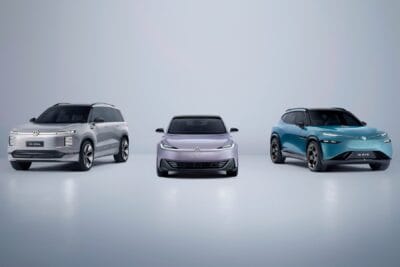

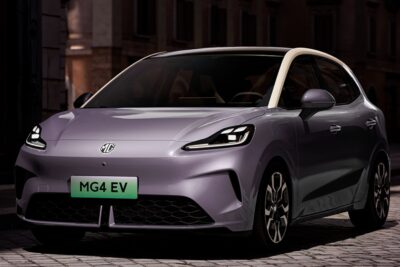
1 Comment